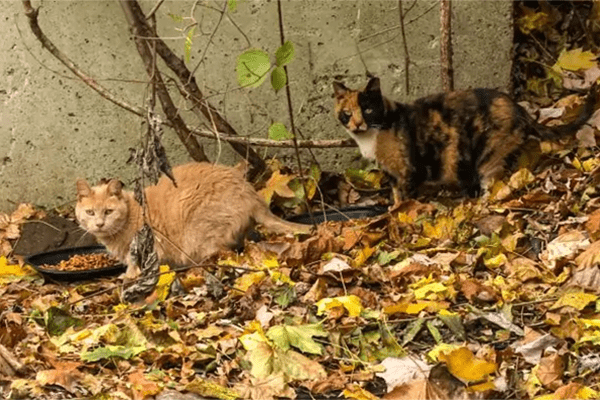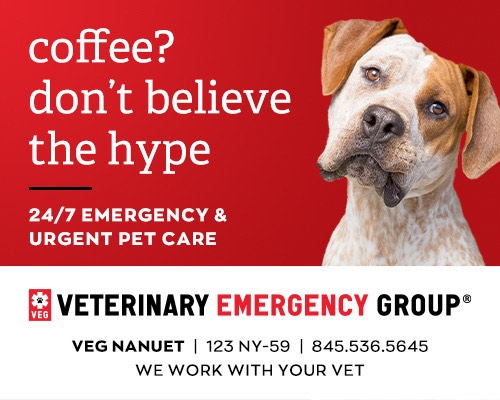|
RCBJ-Audible (Listen For Free)
|
Trap Neuter Vaccinate Return Requires Buy-In From Public Officials, Law Enforcement, Cat Caretakers, Community
EDITORIAL
By Tina Traster
Tens of thousands of homeless cats live on Rockland County’s streets. They dwell in shopping centers, condominium complexes, behind restaurants, industrial parks and sometimes in and around backyards. For time eternal, public officials have been entirely indifferent or disinterested in this crisis because they didn’t define it as a crisis, nor did they view it as a key issue on voters’ minds.
From time to time the issue surfaces when horrific cat hoarding cases come to light; the more astute understand how a Good Samaritan or well-intentioned person ends up in an overwhelmed, unsanitary, or unmanageable situation, and the authorities are called upon to fix the problem. The recent hoarding case on Carroll Street in Pearl River raised the issue of hoarding though too few connect the dots between hoarding and the overpopulation of “ferals” or community cats, as cat activists prefer that they be known.
The ASPCA has estimated that there are nearly 100 million community cats on the streets nationwide but there are a growing number of communities that have taken control of the problem through a time-tested method known as “TNVR”, or Trap, Neuter, Vaccinate, Return. The premise behind this concept is that the best measure for dealing with an established cat colony is to fix every cat to stem population growth, vaccinate them against rabies, and return them to a colony that is managed by someone or a group that is feeding them. Successful colonies eventually fade out through attrition or death – and cats living on the streets don’t tend to live much past eight to ten years old, compared to indoor cats who can live up to 18 years old or beyond.
TNVR programs are complex – they involve legislative efforts (villages, towns and cities must get on board with the process), buy-in from animal control officers and law enforcement, tolerance from the development community and local residents, and broad education for the public. Municipalities that embrace TNVR programs put muscle and money behind the effort; there are low cost spay-neuter clinics set up to fix community cats, though none in Rockland County. These cats need places to recuperate and subsequently be managed. In some instances, municipalities that take these programs seriously map the colonies and work closely with the “soldiers” in the trenches who are out trapping the cats and looking after them throughout their lives.
This ideal scenario is not implausible, and in fact there are many communities that are well underway with successful programs. Rockland County is not one of them.
For too long, activists have been unable to successfully persuade public officials of the need to take TNVR seriously. They have made their case – with reasons ranging from humanitarian to economics to public health and safety. A festering community cat problem is an economic albatross for communities; it continuously means shelters are overrun with sickly kittens that pour in during the spring and the summer. It creates the environment for hoarders to absorb too many cats, sometimes in their homes, other times in backyards, which creates a nuisance for neighbors. Also, empathetic citizens who see cats in need instinctively feed them over a lifetime, to their own financial detriment. There is no support system governmentally for this crisis in Rockland – and it hasn’t been for a lack of trying.
About six years ago, this reporter made a documentary Catnip Nation, which chronicled spitfire colony caretakers who were willing to take on government and the law to fight for these unrepresented animals. This film opened the door to a world most people don’t know about. The film focuses on three stories from New Jersey, Long Island, and Kansas. But the stories are universal, and the same problems exist in this county. At the time, a group of animal activists brought TNVR to public officials – leading with Clarkstown Supervisor George Hoehmann and Town of Haverstraw Supervisor Howard Phillips. Both resisted the idea. The entire Clarkstown town council, with the exception of Don Franchino, showed no interest – in fact they showed a bias against passing legislation that would have enabled a TNVR ordinance. Phillips, at the time, was more direct. “Haverstraw is not in the cat business,” he said at the time, adding that he’d told his animal control officer to only deal with stray dogs. New York State Law does not require towns to have provisions for cats.
The activists worked for more than two years to try and connect the dots between an overwhelmed animal shelter (which Hoehmann and Phillips increasingly criticized) and the need for public officials to get on board with TNVR. Then-supervisor Chris Day was equally indifferent, as was the president of the Hudson Valley Humane Society Ann Marie Gaudio. Efforts to join forces with the activists were dashed. At the time, the HVHS had just a few cats in its facility; activists were told the HVHS focuses on adoptable animals. Incidentally, Gaudio is being tapped to run the new shelter Phillips plans to build.
County officials also showed indifference to the issue.
Only two village mayors – Michael Kohut of the Village of Haverstraw and Robert D’Amelio of the Village of West Haverstaw – got on board and passed ordinances for TNVR. Both were able to grasp why it was important, and how it operated in the greater eco-system of cat management, but full-blown programs were never developed.
Meanwhile, by 2016, under the auspices of its former manager, Hi Tor Animal Care Center in Pomona kept amassing more and more ferals on Hi Tor’s grounds, where a large colony lives today. Feral colonies are nearly impossible to relocate, which means Hi Tor’s colony will need to phase out if Rockland Green builds a shelter elsewhere.
In January 2022, Phillips, who also chairs Rockland Green (the Solid Waste Management Authority) led the effort to take over animal management in the county. In late 2022, he convinced County Executive Ed Day to turn over the decrepit 60-year-old facility (which had been slated for a rebuild project) to Phillips and Rockland Green. Rockland Green leases the facility and the public authority contracts with Hi Tor to run the shelter. Rockland Green uses taxpayer money to run Hi Tor.
Rockland Green’s amended charter, its contract with Hi Tor, and leasing/purchase plans of a 15,000 warehouse at 427 Beach Road in the Village of West Haverstraw, are well documented. The board of Rockland Green, which meets monthly in public and is comprised of 17 public officials, has signed off on these plans.
But recently, Phillips and Nixie Gueits, a cat activist who was once a Hi Tor board member but who runs Four Legs Good, a cat rescue, from a residential manse (the former Dr. McGuffie mansion) have both talked publicly about a TNVR program. There has been no public resolution. The Rockland Green Board has not signed off on funding or logistics for such an effort. FOILs to Rockland Green regarding this program have yielded a lack of feedback or documentation. However, cat activists say Phillips has committed to funding a portion of the fee to have 40 ferals fixed on a monthly basis at TARA.
“It’s a drop in the bucket,” said one cat rescuer, who preferred to remain anonymous. She added that trappers and rescuers would still be on the hook for $10 per cat. T.A.R.A., The Animal Rights Alliance based in Orange County, charges trappers $70 for ferals. Because this will be paid for with taxpayer dollars, Rockland Green’s board must at some point pass a resolution.
Phillips, who appears to be running with this idea unilaterally, has also not informed Hi Tor of its plans even though the shelter absorbs dozens of kittens born to feral mothers weekly. Rockland Green will soon enough realize that TNVR is not something public officials can dabble in. These are programs that need to be designed holistically with buy-in from public officials, law enforcement, the development community, low cost spay neuter clinics (again, Rockland County doesn’t have one), and the cat community.
It takes about seven to eight years to see results in a colony’s phase-out. These are long term projects that require sustained commitment and a deep understanding of what the problem is and how the solution is applied. Throwing good will at the issue is not the same endeavor as tackling the crisis with thought, specificity, and inclusion. This demands a much larger discussion because if towns are not on board, fixing ferals doesn’t matter. The crux of TNVR is that cats are returned to the colonies where they are living, and this is a chronic source of tension with many landlords.














